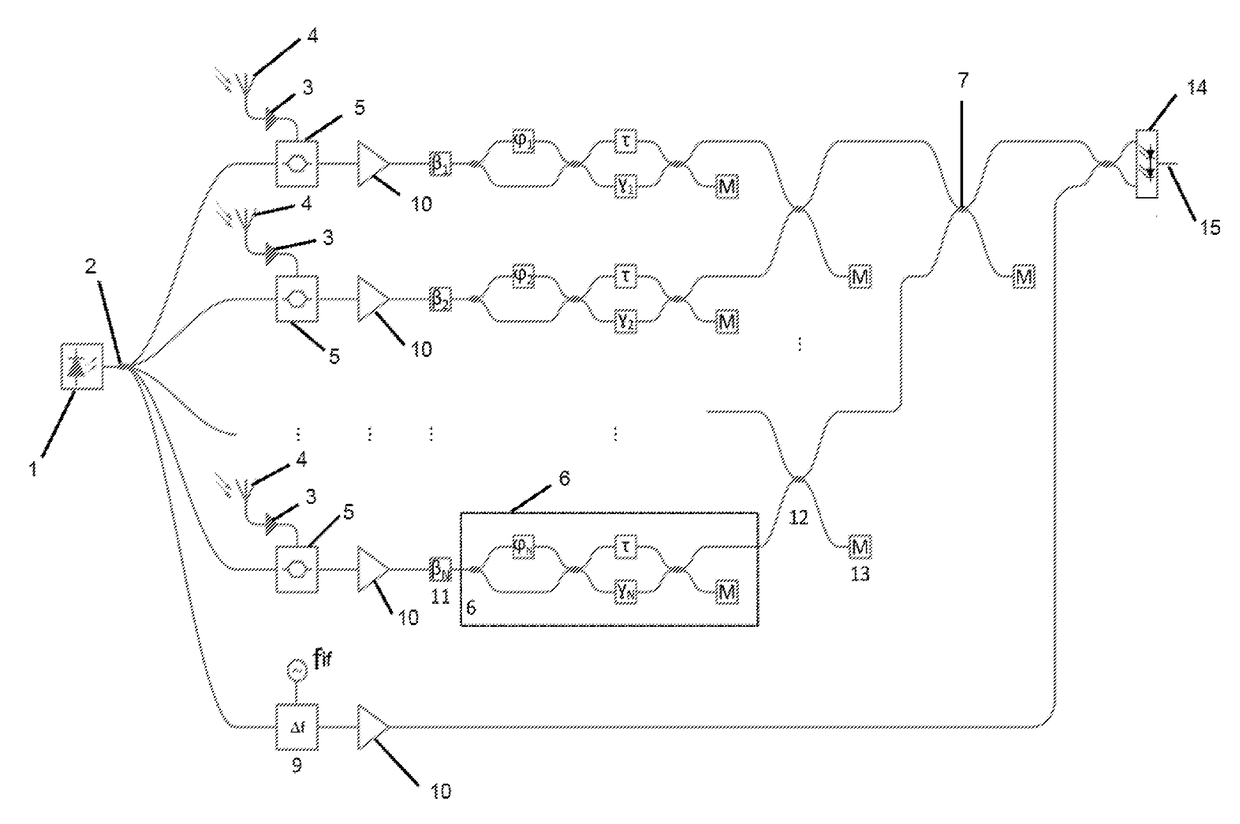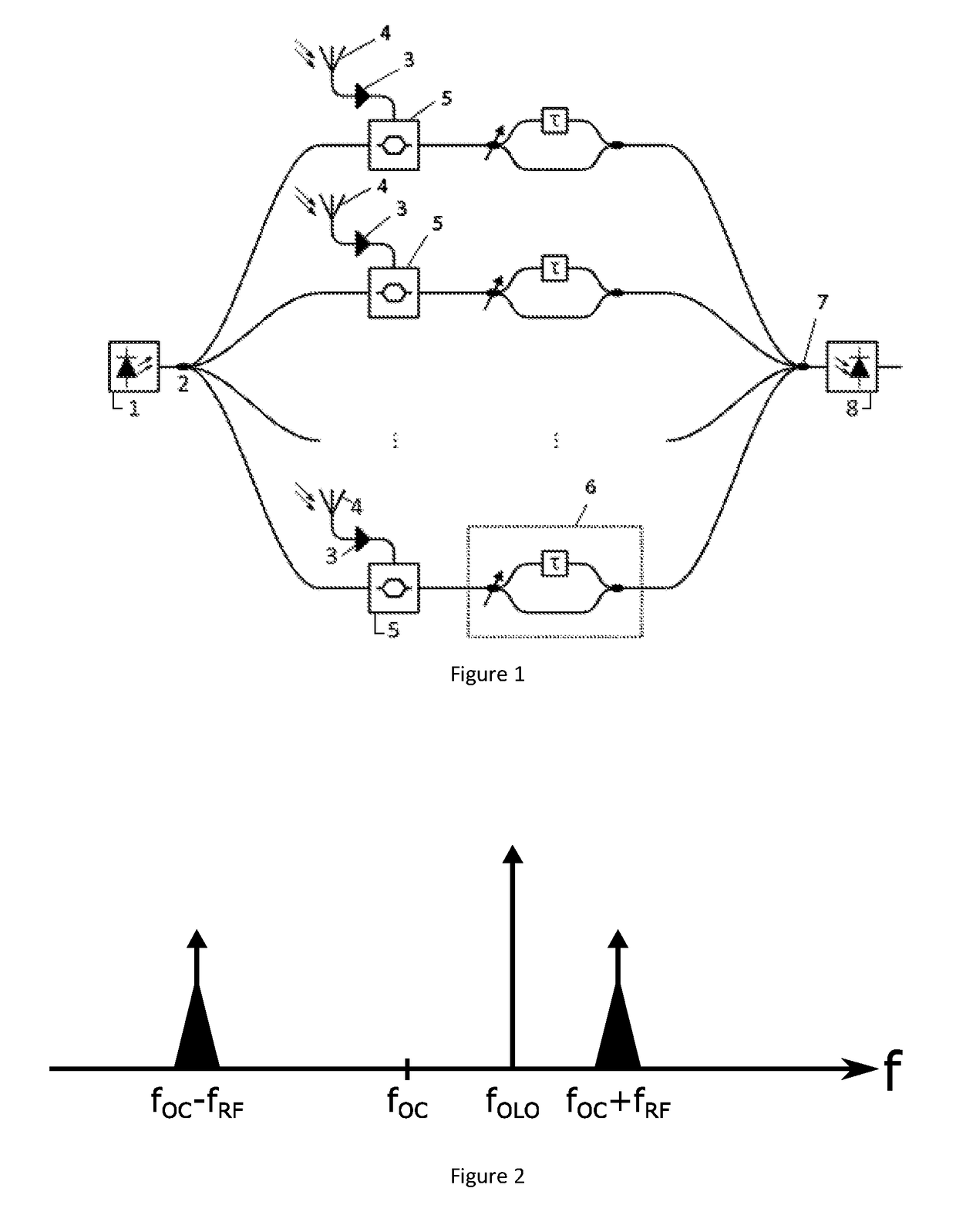Photonic beamforming system for a phased array antenna receiver
a beamforming system and phased array technology, applied in the direction of rf signal generation/processing, fiber transmission, optical transmission, etc., can solve the problem of serious limitation of spectrally rich signals, phase shift applied to a given signal only correct for a single frequency, and difficulty in implementing tunable electrical delay lines, so as to reduce the linewidth requirements of the input laser source.
- Summary
- Abstract
- Description
- Claims
- Application Information
AI Technical Summary
Benefits of technology
Problems solved by technology
Method used
Image
Examples
embodiments
[0100]A second embodiment is shown in FIG. 3. This embodiment incorporates all the advantageous features described in the previous section. Besides the N upper paths required to process the input signals from all the N antenna elements, there is another path at the bottom used to generate the frequency-shifted OLO signal. A copy of the input laser signal is frequency-shifted by a frequency shifter (9) from a frequency of ƒOC to a frequency of ƒOLO=ƒOC+ƒIF.
[0101]After electro-optic modulation, for the input RF signals, and frequency-shifting, for the OLO, the resulting signals are amplified by an array of optical amplifiers (10). Each modulated optical signal is then phase-shifted by a phase shifter βi (11), i=1, . . . , N. The array of phase shifters (11) is useful not only for individual RF photonic phase shifting, but also for active phase stabilization of each path. The use of phase shifters (11) can be avoided if electro-optic phase modulation is used, as phase shifting can be p...
PUM
 Login to View More
Login to View More Abstract
Description
Claims
Application Information
 Login to View More
Login to View More - R&D
- Intellectual Property
- Life Sciences
- Materials
- Tech Scout
- Unparalleled Data Quality
- Higher Quality Content
- 60% Fewer Hallucinations
Browse by: Latest US Patents, China's latest patents, Technical Efficacy Thesaurus, Application Domain, Technology Topic, Popular Technical Reports.
© 2025 PatSnap. All rights reserved.Legal|Privacy policy|Modern Slavery Act Transparency Statement|Sitemap|About US| Contact US: help@patsnap.com



